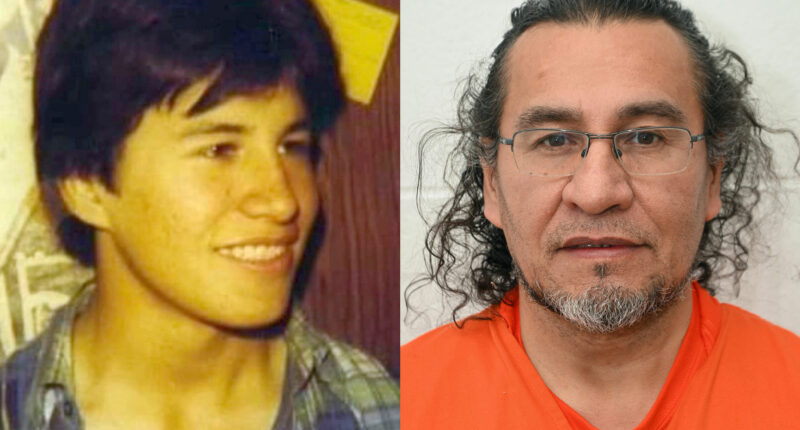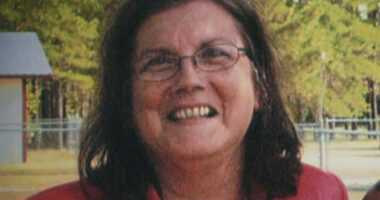Share this @internewscast.com
For many years, Randy Cota, a retired police officer, knew Joseph George Sutherland as a reserved nature lover residing in the small, remote town of Moosonee, Ontario. Then, one evening, Sutherland shared a disturbing secret.
The staggering confession revealed that Sutherland, who was 60 at the time, had brutally raped and murdered two women nearly forty years prior.
“I was completely shocked,” recalled Cota — who had spent extensive time outdoors with Sutherland engaging in activities like snowmobiling, hunting, and trapping — during the latest episode of Dateline: Unforgettable, titled “Evil Walked Through the Door.”
On the night of November 24, 2022, as Sutherland, a divorced father of grown children, made the grim confession, Cota returned to his law enforcement roots and tried to find a way to get Sutherland to safely turn himself in.
The remarkable night ended a decades-long chapter to identify the killer of two of Toronto’s most notorious unsolved murders: the deaths of 22-year-old Erin Gilmour and 45-year-old Susan Tice.
Sutherland’s eventual arrest also gave the victims’ families the closure they’d been seeking for a staggering 40 years.
“I just broke down in tears,” Gilmour’s brother Sean McCowan remembered of the emotional moment he learned of the arrest. “Like screaming, tears, alternating back and forth, and just like 40 years of waiting.”
Who was Erin Gilmour?
McCowan’s nightmare began decades earlier, just days before Christmas in 1983, when his older sister Gilmour was found raped and stabbed to death in her apartment in an upscale neighborhood of Toronto on December 20.
“She was bound and gagged,” Det. Stephen Smith explained. “She had been stabbed multiple times in the front, up in her upper torso, as well as in the back and it was believed right away that she was most likely sexually assaulted.”
The body was discovered by Gilmour’s boyfriend, Andrew Munk, who’d arrived late to pick his girlfriend up for a dinner date and made the grisly discovery in a bedroom after finding the front door ajar. In his shock, he’d initially told a 911 dispatcher that he believed Gilmour had committed suicide.
“Hurry up, please,” he pleaded in a recording of the call, played on Dateline: Unforgettable.
Once on the scene, detectives quickly discovered that Gilmour’s death had much more sinister roots.
“There was definitely a fight before she died,“ noted Det. Andrew Doyle. “Unfortunately, it was one that she couldn’t win.”
From the beginning, the case captivated the Toronto press, in part because of Gilmour’s prominent father, David Gilmour, a wealthy businessman who founded Fiji water.
But even with the intense scrutiny from the press and investigators’ tireless efforts to track down the killer, the case remained an unsolved mystery. Munk was eventually ruled out after ATM records placed him in another part of town at the time of the killing.
“This is a hole that we will never be able to sort of fill in or fix basically,” McCowan said of the immense impact that Gilmour’s death had on his family.
Who was Susan Tice?
In 2000, advances in DNA technology positively linked Gilmour’s case to the 1983 murder of 45-year-old mom-of-four Susan Tice.
Tice was violently killed four months before Gilmour, just two miles away, by the same unknown man. Tice, a therapist, was going through a bitter divorce at the time of her death and initially her husband was considered a suspect.
“She was a strong woman doing her thing. You know, my father wasn’t happy with it,” her son Ben Tice remembered. “She was flexing her independence, her womanhood. You can’t stifle a forest fire. She was just a force.”
Much like with Gilmour’s case, Tice had been sexually assaulted and was found stabbed to death in her bed.
When she didn’t show up for a family dinner, her concerned brother-in-law drove to her apartment and made the grisly discovery after finding the back door of the home open.
Tice’s husband was eventually cleared during the investigation, but the case later went cold.
In 2000, when DNA evidence left behind at the crime scene linked Tice’s murder to Gilmour’s case, detectives took another look to see if there were any commonalities between the two victims, but they were unable to find any definitive connections.
Advances in genetic genealogy lead to break in case
Then, in 2018, a new form of technology, known as investigative genetic genealogy, was used to identify California’s infamous Golden State Killer as former cop Joseph DeAngelo. In that case, authorities had matched crime scene DNA to relatives of the killer who’d already uploaded their own DNA profiles to public genealogy websites.
Detectives in Canada decided to use the same strategy in Gilmour and Tice’s cases and turned to the Texas-based forensic lab, Othram Labs, for help.
They were able to build a DNA profile, but a large component of the DNA was characteristic of First Nations in Canada, who are Indigenous peoples in the region. Not many people with First Nations heritage had used public databases and the population was also known to have a more homogenous gene pool, making the identification of a suspect even more difficult.
But eventually Toronto Police’s in-house genealogist James Atkinson was able to determine that the killer came from one family with five brothers. Detectives were then able to eliminate one brother after another until they came to Sutherland, who was now living in a remote part of northern Ontario.
At the time of the killings, Sutherland was 21 and living in Toronto.
In November of 2022, detectives traveled to the remote area where Sutherland lived, armed with a warrant to collect his DNA.
“He was very polite when we were at the door,” Smith recalled.
Authorities added that although Sutherland didn’t say much, he seemed relaxed as he handed over his DNA at a nearby police precinct.
Joseph George Sutherland confesses to murders
Investigators headed back to Toronto to await the DNA test results, but the very next day, Sutherland made that harrowing confession to his longtime friend, Cota.
“He said, ‘I’ve done some things I’m not very proud of,’” Cota recalled.
Sutherland then confessed to committing some home burglaries in his youth in Toronto.
Cota said of Sutherland’s shocking admission: “He says, ‘Well, I was in a house and I was stealing jewelry to pawn it and I come out of the kitchen and this woman came out of her room. It was dark and I grabbed a knife and I held her at knifepoint, took her into her room, I raped her and then I stabbed her to death.'”
Sutherland confessed to carrying out the same act again just months later.
With tears streaming down his face, Sutherland said he was “very ashamed” of his actions. Cota had to leave to get his grandchildren on a train, but urged his friend not to go anywhere.
He then reached out to his old police contacts and Cota agreed to try to help get Sutherland to turn himself in when he returned to the home a short time later.
“I said, ‘There’s two families here that have gone through hell and you’ve had 40 good years.’ And I said, ‘It’s time to do the right thing, man,’” Cota said.
Sutherland agreed and gave himself up to authorities that same night.
Who killed Erin Gilmour and Susan Tice?
Sutherland ultimately agreed to plead guilty to two counts of second-degree murder and was sentenced to life in prison with the possibility of parole after 21 years, finally putting an end to the decades-long cases.









